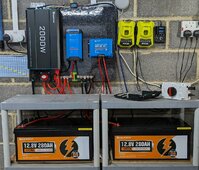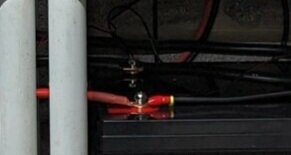So just a quick update and question.
Installed some of the new stuff today.

Not too keen on those busbars being so close together but I'll make another board soon.
My question is about fuses. Is there a specific type or size that I need to be looking at for the fuses from the battery and charge controller?
Thanks for all the input.
Cheers
Installed some of the new stuff today.

Not too keen on those busbars being so close together but I'll make another board soon.
My question is about fuses. Is there a specific type or size that I need to be looking at for the fuses from the battery and charge controller?
Thanks for all the input.
Cheers




